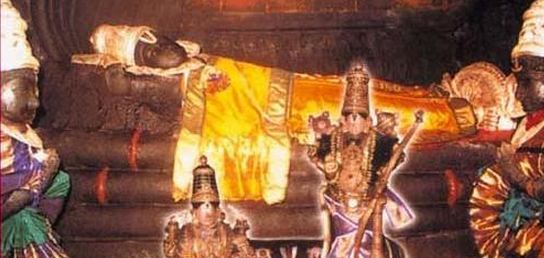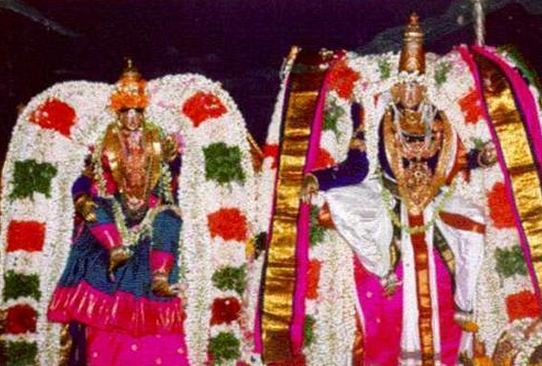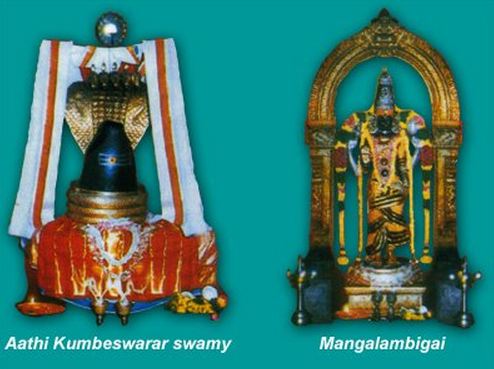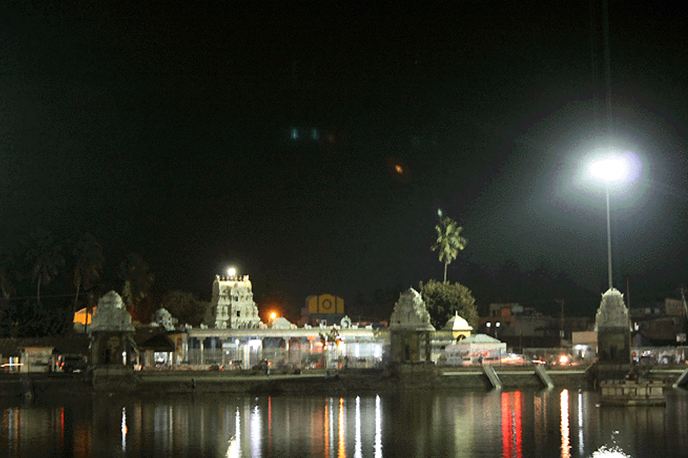Sarangapani Temple is one of the most important Vishnu temples in South India (the others are Sri Rangam and Tirupati). Seven Alvars, important personalities from Shri sampradaya, sung the glories of this temple. It was built from 13th to 17th century by Nayak kings, but the inner sanctum is older and it dates back to the beginning of their era. Gopuram is 44 m high. South gate is used as the entrance in times when sun is on the southern hemisphere and northern gate serves as the entrance when sun travels north. There are many Deities in the temple and we can also find the sanctum of Komalavalli (Lakshmi) and Pathala Shrinivas (Vishnu).

History of the temple is connected with the story from Krishna book. The sages headed by Maharishi Saunaka on the banks of Sarasvati wanted to find out which god is the highest. They send Bhrigu Muni to visit them and test them. At the end Bhrigu pronounced Lord Vishnu as the greatest since He didn’t loose His temper even after being kicked by Bhrigu in the chest. Lord Vishnu, on the contrary welcomed Bhrigu with sweet words and gave him proper honour to a visiting brahmana..
. 

After that incident Bhrigu regretted his offence and prayed to be able to serve the Lord in two next births. In Ramacandra’s pastimes he was Guha and thereafter he was born as the sage Hema. Hema rishi prayed for Shri Vishnu’s help in a place of present Kumbakonam. Here Bhrigu also got the blessing to have Lakshmi as his daughter. In this way Lakshmi could be reunited with her husband Shri Vishnu through him. Finally Lord Vishnu descended on Earth in His chariot to get in marriage the hand of daughter of Hema rishi. The central sanctum and mandapa (hallway) of the temple has the shape of a chariot and in the basement wheels and elephant pulling the chariot are clearly visible.


